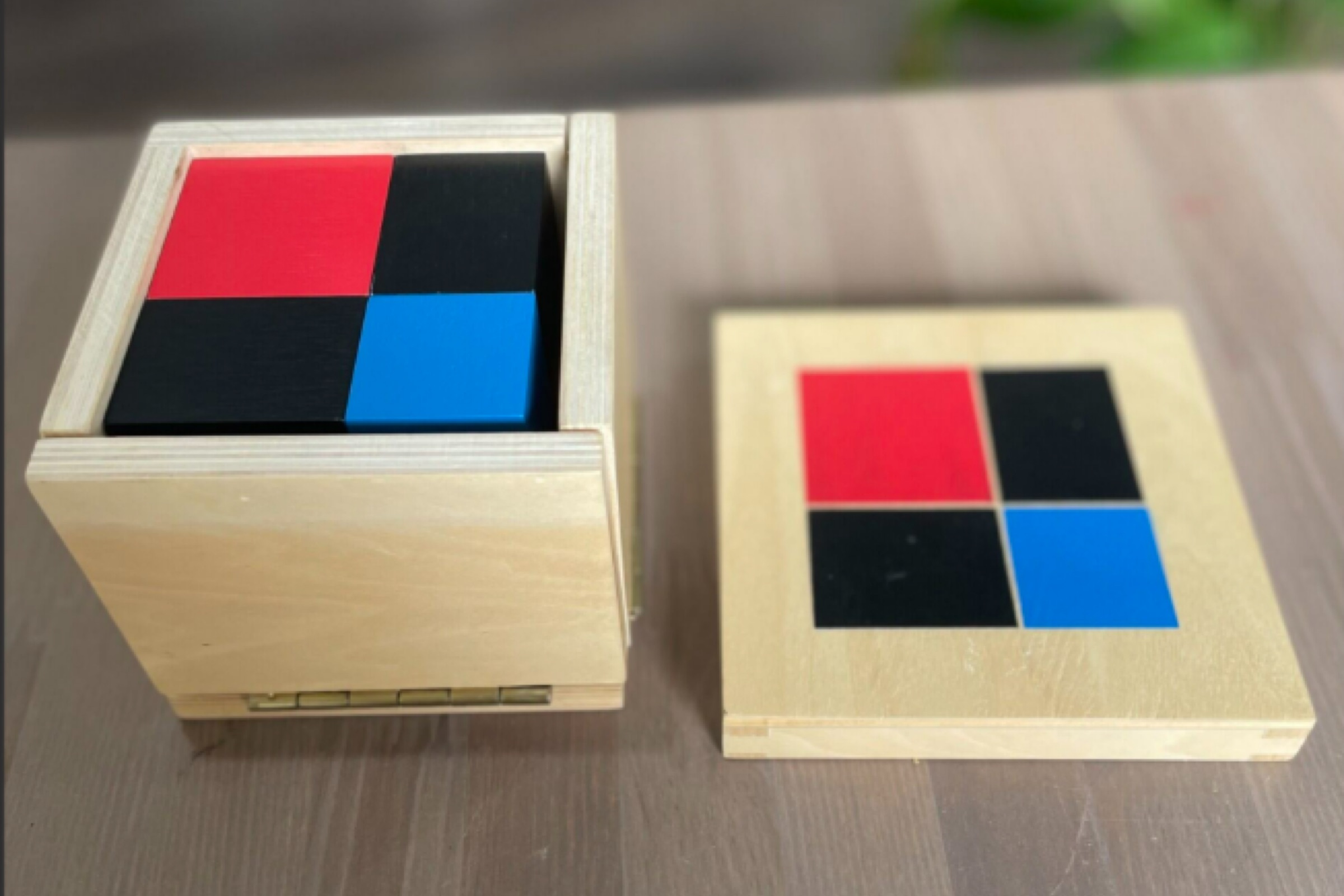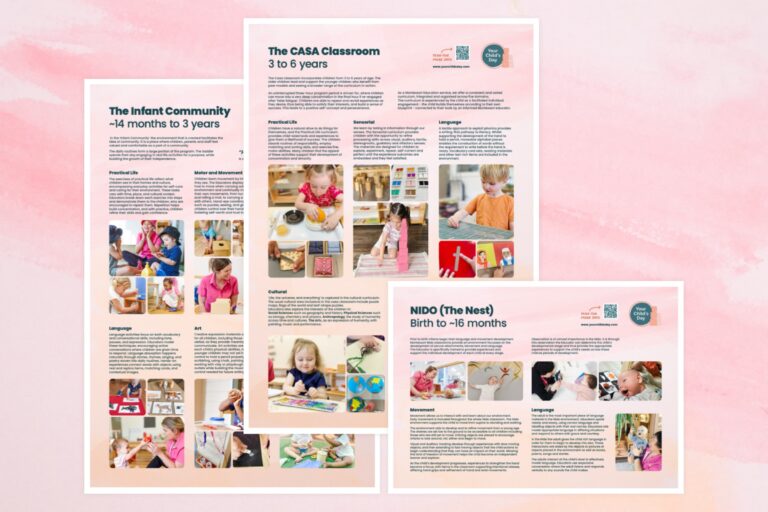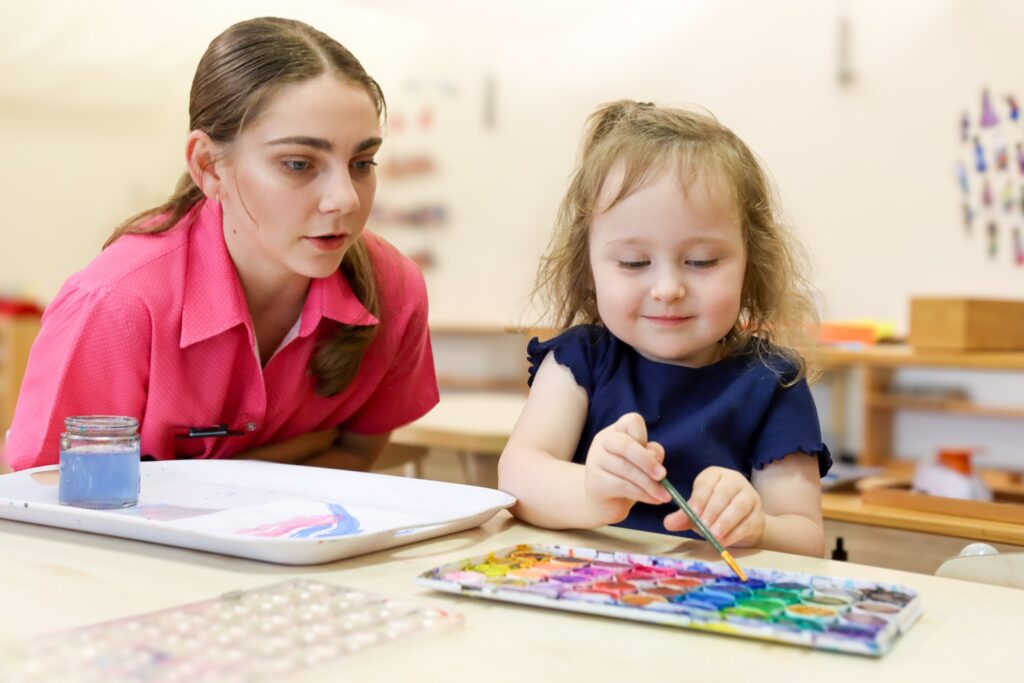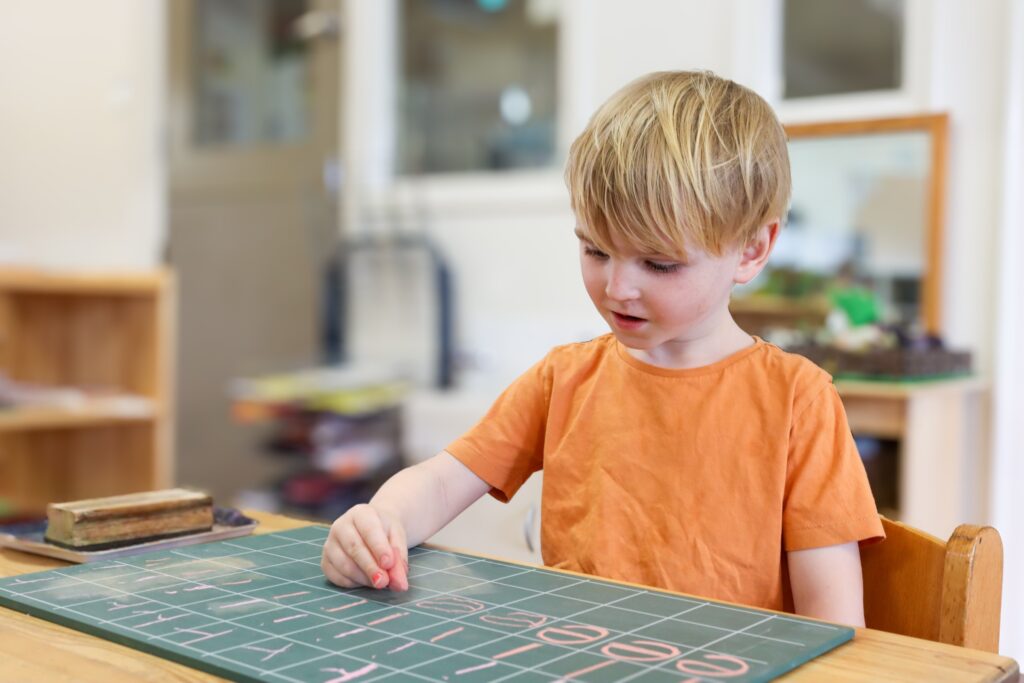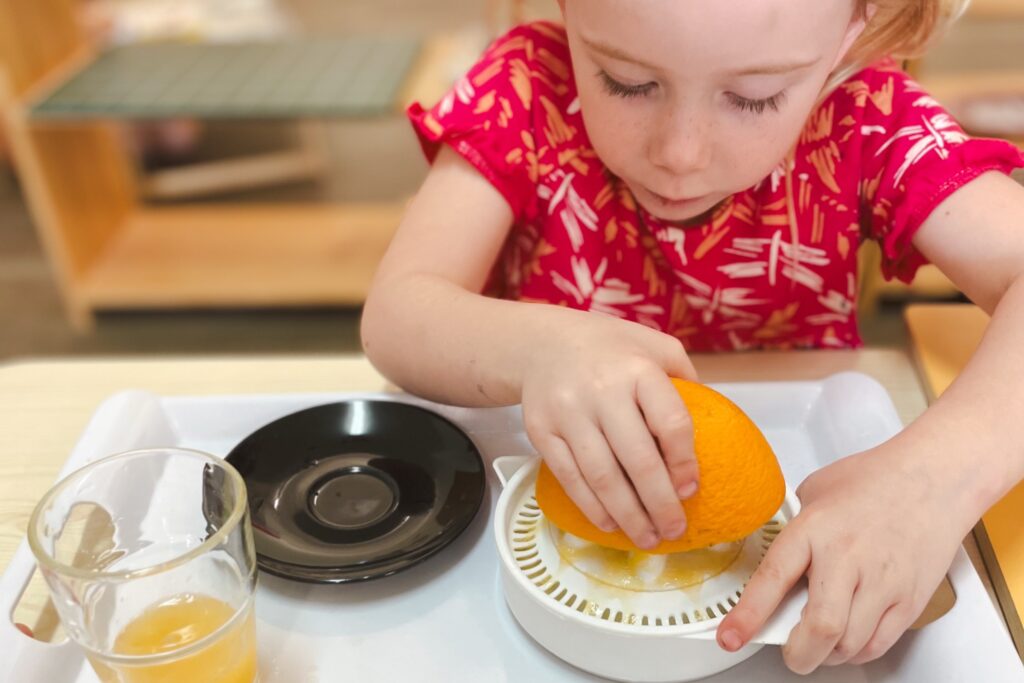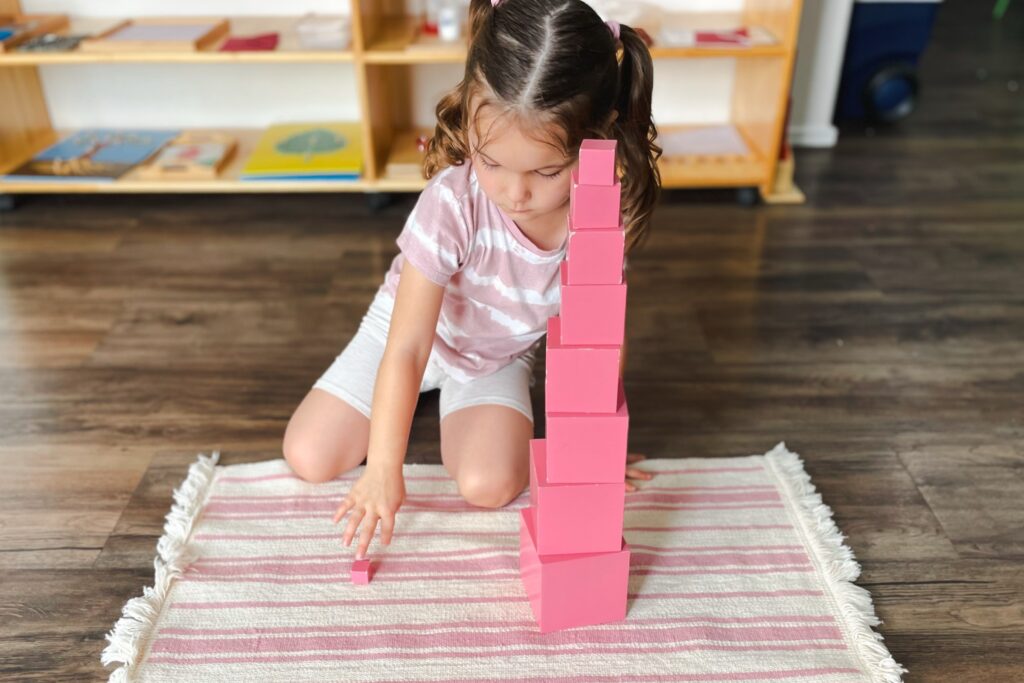Mathematics
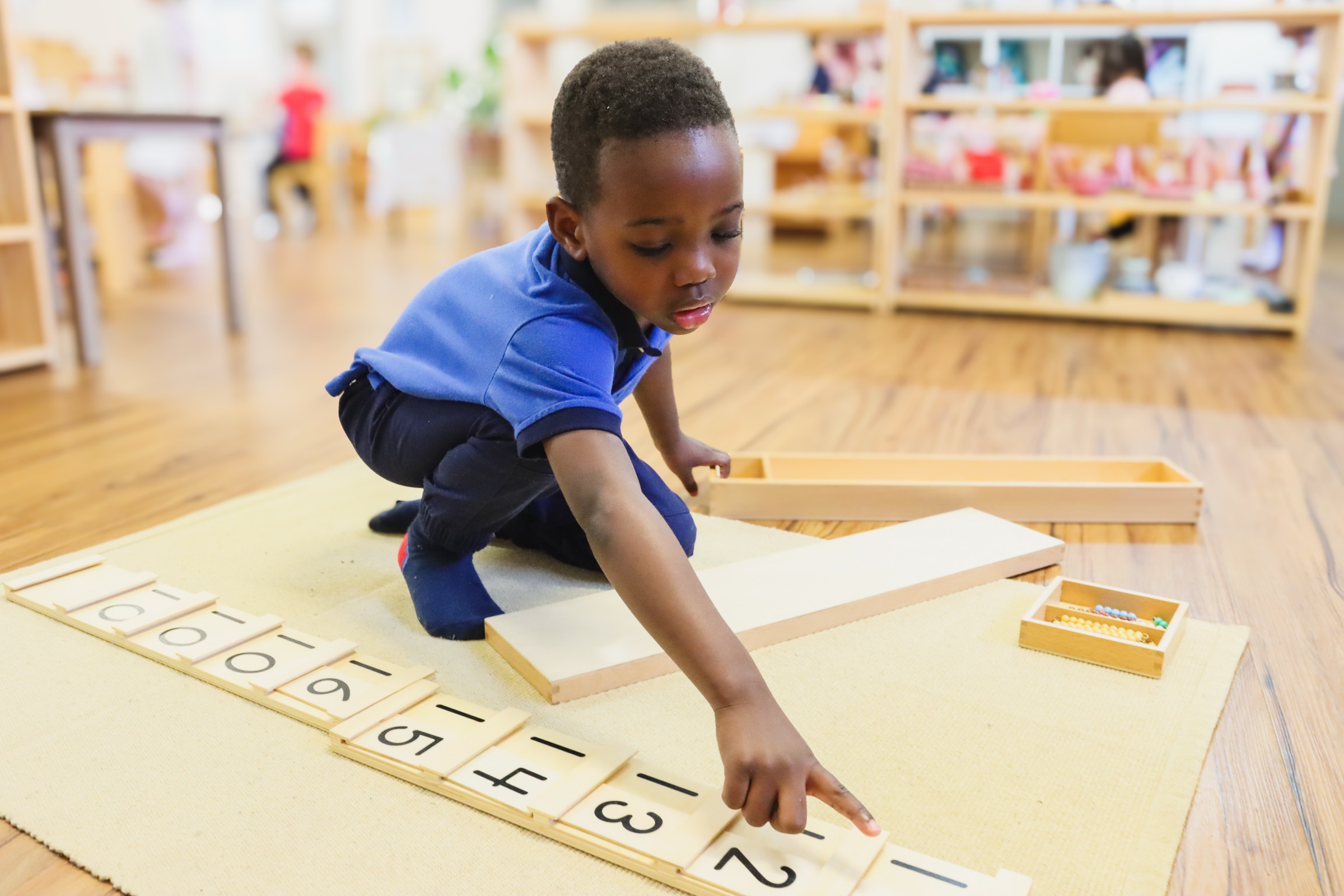
The Mathematics curriculum is a range of materials which children move and compare, providing them with an experiential understanding of mathematics before abstract concepts are incorporated. Numeracy begins with rods and beads which can be compared, added together and taken away from. Fractions are puzzles and skittles. Operations are undertaken with the actual amounts – such as 2146 represented as two cubes of 1000 beads, one square of 100 beads, four rods of 10 beads and six loose beads. “Carrying” a 1 is a physical process of changing ten loose beads for a single rod of ten beads.
The concrete understanding of mathematics precedes the abstract. The Montessori mathematics curriculum is therefore a range of materials which children move and compare, providing them with an experiential understanding of mathematics before abstract concepts are incorporated. Numeracy begins with rods and beads which can be compared, added together and taken away from. Fractions are puzzles and skittles. Operations are undertaken with the actual amounts – such as 2146 represented as two cubes of 1000 beads, one square of 100 beads, four rods of 10 beads and six loose beads. “Carrying” a 1 is a physical process of changing ten loose beads for a single rod of ten beads. In ‘playing’ with the mathematics curriculum materials, children lay down foundational concepts of mathematics in their mind. Montessori designed the apparatus as “materialised abstractions”.
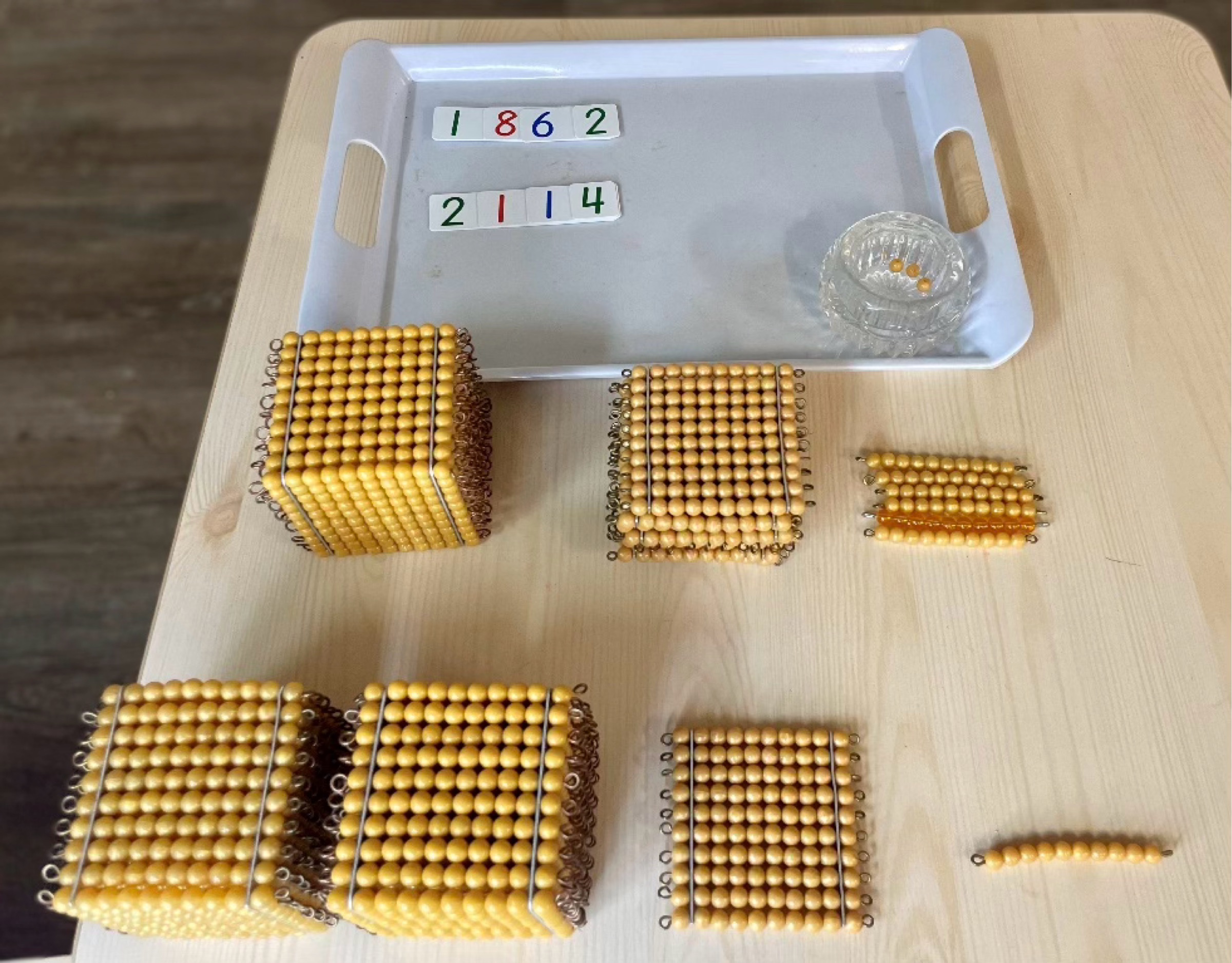
Materialised Abstractions are the physical outworking of maths theory. When learning maths formulas in school, many students report that they struggle to understand or see no relevance. In Montessori children utilise hands-on puzzles in early childhood. These lay down a concrete understanding that brings the abstract to life when encountered later.
Consider the problem: (a+b)3 = The answer is a3 + 3a2b + 3ab2 + b3.
Four-year-old children in a Montessori environment physically handle this in the form of the binomial cube:
